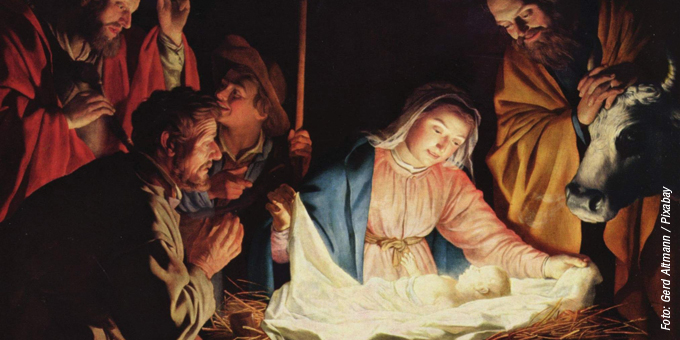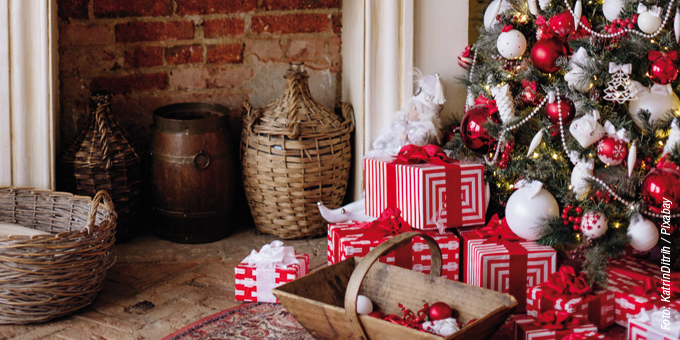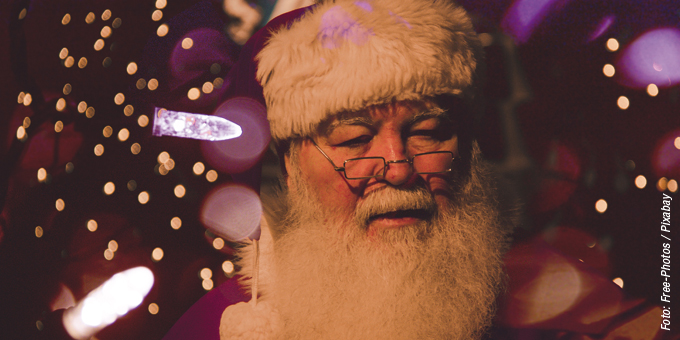I want to receive new articles by email
The Origins of Christmas
By Jerry Brownstein
We all love those wonderful December days when the world is filled with good cheer and the happy vibes of the ‘Christmas spirit’. It is of course the time of a Christian holiday that celebrates the birth of Jesus, but it is also a worldwide cultural and commercial phenomenon that goes far beyond religion. People share celebrations with family & friends, exchange gifts, decorate trees, sing carols and generally feel uplifted. But where and when did all of these customs come from, and how did December 25 become so important?
Christianity began after Jesus died (about 32 AD) as his disciples shared his teachings with other Jewish people in Judea (present day Israel). Over the next 100 years this new religion spread throughout the Roman Empire. In the early years of Christianity Easter was the main religious holy day, and the birth of Jesus was not celebrated. It was not until 300 years after the death of Jesus that church officials decided that his birth should also be a holiday.
The problem was that no one knew what day he was born on, or even what time of year it was. The Bible says nothing about it, and there were no birth records in ancient Judea where Jesus came from. So the church had to make up a date. They decided that the first celebration of Christmas would be on December 25 in 336. This was during the reign of Emperor Constantine who had made Christianity the official religion of the Roman Empire. Why did they choose this date?
 “Why was December 25 chosen as
“Why was December 25 chosen as
the date to celebrate Christmas?”Most historians and religious scholars believe it was chosen by the Emperor as a way of adopting and absorbing established pagan celebrations – both in Rome and in its conquered territories.
Holding Christmas at the same time as traditional winter solstice festivals increased the chances that Christianity would be popularly embraced. An important Roman festival on December 25 was the “
dies solis invicti nati“ – the day of the birth of Mithra who was the god of the unconquerable sun. This celebrated the ‘rebirth’ of the sun as days began to get longer, and for many Romans it was the most sacred day of the year. It was also the time of the Saturnalia festival – a holiday in honour of the Roman god of agriculture.

In addition, there were many pagan societies that had become part of the Roman Empire, and the Emperor wanted to convert them to Christianity. All of these civilizations had traditional festivals around December 25 which celebrated the beginning of longer days and extended hours of sunlight. So it was very practical for Rome and the church to merge the day of Jesus’ birth with the date of these existing holidays. Originally Christmas was celebrated like the pagan holidays which had preceded it, with feasting and a carnival-like atmosphere. The Christmas customs that we know today evolved over centuries.
 The practice of giving gifts began in the 15th century, and was well established by the 1700’s
The practice of giving gifts began in the 15th century, and was well established by the 1700’s. In most European countries gifts are exchanged on Christmas Eve in keeping with the notion that Jesus was born on the night of the 24th. In North America the morning of December 25 has become the time for the exchange of gifts. The tradition of decorating a Christmas tree started in the 1600’s, but it has a much older derivation. Early civilizations in Scandinavia celebrated ‘Yule’ from December 21 through January, in recognition of the return of the sun. Fathers and sons would bring home a large log which they would set on fire, and the people would feast until the log burned out. This was one of the pagan holidays that was incorporated into Christmas, and it started the tradition of cutting trees as part of the celebration.
Of course no discussion of the origins of Christmas traditions is complete without remarking on the legend of Santa Claus. This can be traced back to a monk named Nicholas who was born around the year 280 in the area which we now call Turkey. He became Saint Nicholas because he used all of his inherited wealth to travel around the countryside helping the sick and the poor. The Santa Claus that we know today was ‘born’ in a poem called “A Visit from Saint Nicholas” that was written in 1822. It begins with the famous line “Twas the night before Christmas...”, and goes on to depict Santa Claus as a man who flies from home to home on a sled driven by reindeer to deliver toys. The iconic version of Santa Claus as a jolly man in red with a white beard was immortalized in 1881, when the American cartoonist Thomas Nast created the image that we know today.

It is amazing how this holiday, that was created as a religious recognition of the birth of Jesus, has also become a secular celebration that is beloved throughout the world. As this very challenging year comes to an end, we are all in need of the special feelings of joy that Christmas brings: streets decorated with beautiful lights, people smiling and wishing each other ‘Feliz Navidad’, children excited to see what presents Santa will bring them and a feeling of optimism filling the air.
Just as the ancient festivals on December 25 welcomed the rebirth of the sun, we can use this Christmas to celebrate the birth of a new era of light that will drive away the darkness of the past year.










